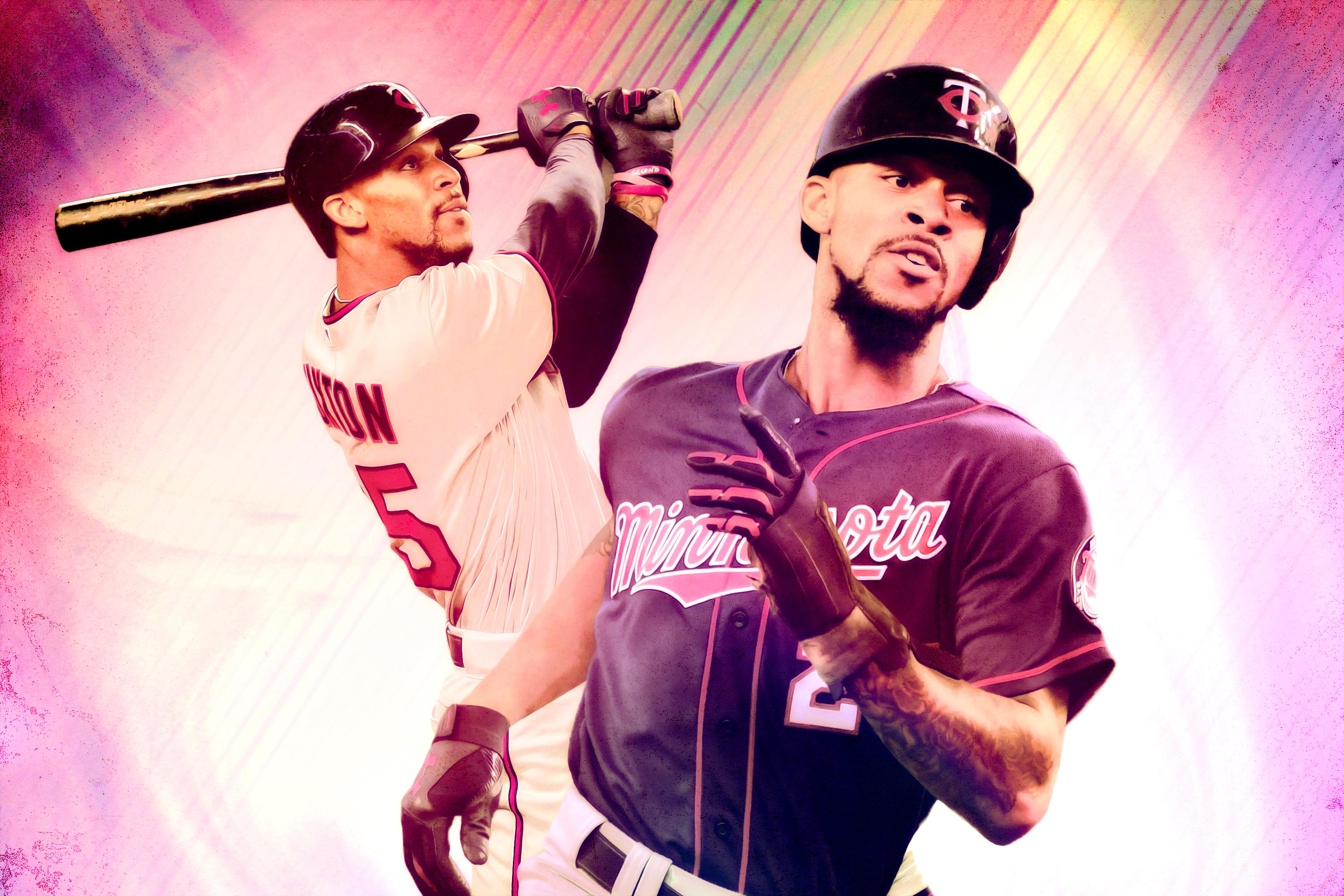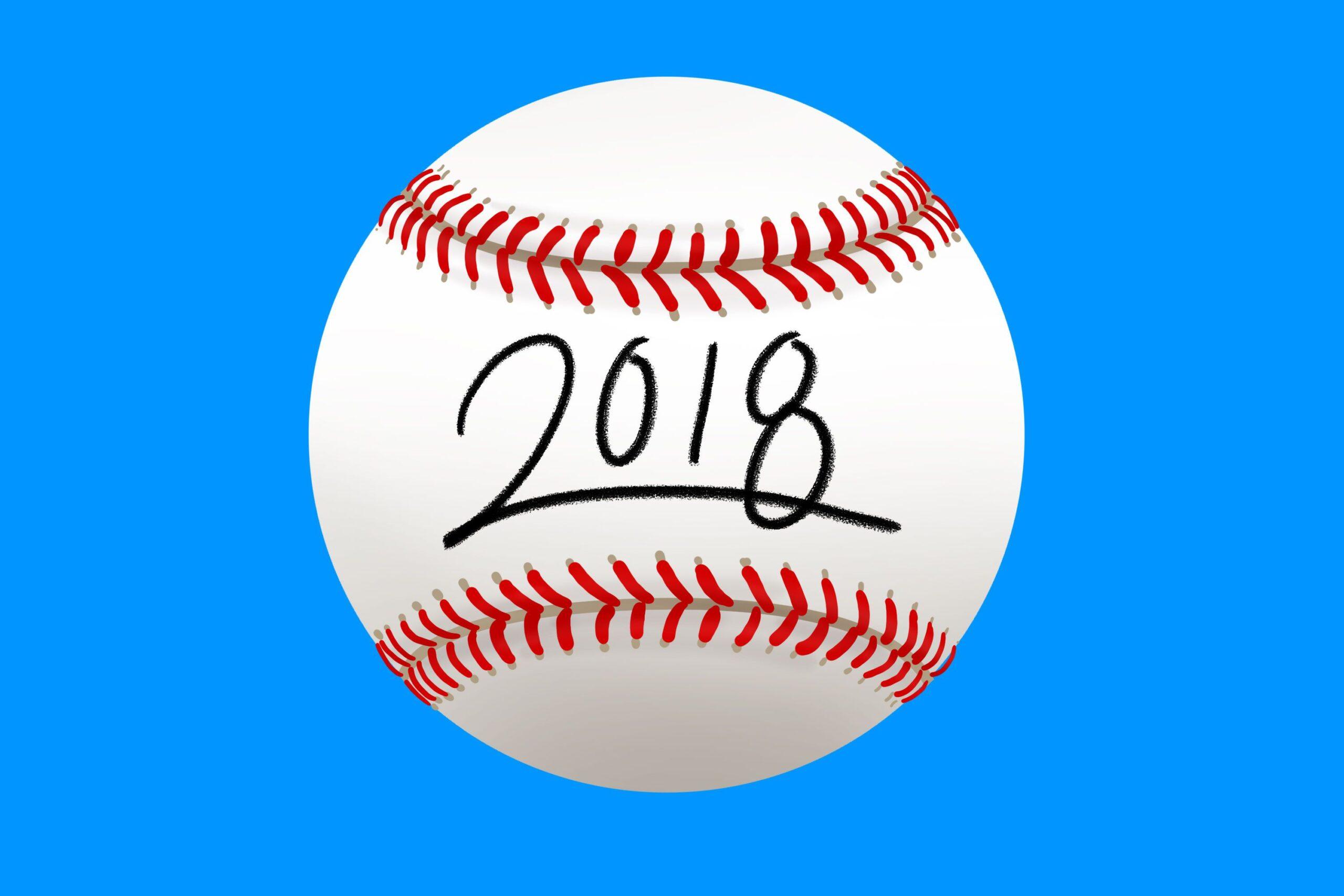
There are two kinds of great defenders: quiet ones and loud ones. Quiet defenders anticipate the play, always throw to the right base, always make the right read, and rarely make mistakes. In coaching parlance, they make the routine play routinely. Sometimes they’ll uncork a ridiculous throw or make a diving stop, but most often they just materialize under a fly ball or in front of a line drive. Boston’s Jackie Bradley Jr. is like this, as were young Adrián Beltré and Chase Utley. In his New Historical Baseball Abstract, Bill James wrote about how Jackie Robinson’s defensive numbers exceeded his reputation because of exceptional positioning, which is often how these guys get noticed: by making plays that only show up in advanced stats.
Loud defenders, however, stab at fly balls at a dead run, come out of their shoes trying to throw out base runners. They might also make good reads and minimize mistakes—take Angels shortstop Andrelton Simmons, for example—but they’re defined by a physicality that seemingly allows them to touch every part of the field no matter where they are when the ball is hit.
Nobody has louder defense than Twins center fielder Byron Buxton.
For three years, Buxton’s glove has been enough to make him a fixture in the Twins’ lineup and a cult figure among hard-core baseball fans, even as his bat failed to live up to the immense potential he showed as a teenager. But as the face of an ascendant Twins team, Buxton could finally go mainstream in 2018.
In baseball circles, Buxton has been a household name since he was drafted second overall in 2012. At the time, he was a toss-up with Carlos Correa for the best high school prospect in the class, though Correa was considered a safer pick and an easier sign. The Astros took Correa no. 1 and inked him to a deal worth 80 percent of what Buxton signed. Houston then famously used the savings to offer Lance McCullers an over-slot bonus with the 41st pick—and the role Correa and McCullers played in last year’s run to the World Series certainly vindicated that decision.
Buxton debuted as a top-10 prospect on the Baseball America and Baseball Prospectus lists in 2013, then rose to no. 1 or no. 2 on both lists for each of the next three seasons, with a scouting report full of 60s, 70s, and 80s—the highest grades a prospect can get. Buxton was already one of the fastest players in baseball, with a plus arm and the potential to be a plus hitter with plus power. To fans who followed prospect lists, the Buxton hype was so great it started to get hard to trust. Could this skinny kid from Nowheresville, Georgia, really turn into a Mike Trout–level player?
Of course, he didn’t. Buxton’s ability to move his body at extremely high speeds sometimes interacted with an inability or unwillingness to slow down or stop when confronted with a stationary obstacle, which slowed down his development. Sure enough, last year’s AL wild-card game was supposed to be Buxton’s coming-out party, but he lasted just three innings after he hurled himself into the Yankee Stadium fence and hurt his back.
Plus, the thing about having plus power is that you need to hit the ball in order to access it, and Buxton had trouble doing that against big league pitching. He hit just .209/.250/.326 in 138 PA with seven strikeouts per walk as a rookie in 2015, then .225/.284/.430 with five strikeouts per walk in 2016. Through his first two seasons, Buxton had a career OPS+ of just 80, which is tough to get away with unless you’re as good at the non-hitting aspects of baseball as Buxton is.
Baseball at the highest level requires a subtlety of athleticism that’s different from other major team sports. It’s all about balance and muscle memory for pitchers and hand-eye coordination for hitters, so while it helps to be strong, fast, and graceful, it’s not the be-all and end-all. That’s how Albert Pujols wound up as the greatest player of his generation despite not being able to outrun the tides, even as a young man.
Some ballplayers do have eye-popping athleticism. Mike Trout, for instance, is what you’d get if you put Pujols’s skill set into Russell Westbrook’s body. But not only does Buxton not run like a baseball player, he doesn’t run like a football player or basketball player or soccer player either. I mean, look at this.
Who runs like that? It’s like he’s being suspended from a harness and is only pushing the ground for forward propulsion. It’s like you took a man and then removed all the heavy bits and rebuilt his skeleton out of some super-light NASA composite. He looks like an emu.
Buxton, who is not a big guy at 6-foot-2, takes about 10 steps to get from first to second. OK, maybe 11—his feet are moving so quickly it’s hard to count. Either way, it’s mesmerizing. I’d pay to watch that guy try to catch the subway.
That speed and athletic facility translate to defense, because not only can Buxton run down balls with the best of them, he can get the ball back to the infield in a hurry.
The amazing thing about that throw is how easy it was. Buxton gets handcuffed on the one-hopper, then in one step and with a flick of his wrist, launches an absolute rope that would’ve hit catcher Kurt Suzuki in the forehead if he hadn’t gotten his mitt up.
Last year was the first time Buxton played more than 100 games, and according to Baseball Prospectus, he was worth 25.5 fielding runs above average (FRAA). That’s six runs better than the next-best center fielder, Lorenzo Cain, and better than any other non-catcher. (FRAA credits catchers not only for defensive work, but pitch framing, which can be worth dozens of runs per season on its own.)
In order to be an above-average player with an 80 OPS+, you pretty much have to be an Andrelton Simmons–level defender at a premium position, which makes for a somewhat exclusive list: pretty much just Simmons and Buxton in down offensive years, and Padres catcher Austin Hedges. (Most other defenders at that level are either part-timers or all-around great players.) And in 2017, Buxton was that good defensively. Simmons, though, is also proof of what happens when you take that kind of glove and pair it with even an average bat. Last year, he had an OPS+ of 103, the best mark of his career, and Baseball-Reference graded him out at 7.1 WAR. He finished eighth in AL MVP voting.
With more offensive potential than Simmons ever had, Buxton is either on the verge of or in the midst of a similar offensive breakthrough. Before last year’s All-Star break, Buxton was 235th out of 246 hitters in wRC+ at 59 (min. 200 PA). His strikeout rate, 30.7 percent, was 16th highest in baseball, while his isolated power, .090, was eighth lowest. But in 228 plate appearances after the All-Star break, Buxton hit .300/.347/.546, good for a 130 wRC+. That’s 39th out of 197 players with 200 or more PA after the break, one spot behind last year’s NL Rookie of the Year, Cody Bellinger. Half-season WAR totals aren’t particularly precise, but in the second half of last year, FanGraphs rated Buxton as the 15th-most valuable position player in the game, tied in WAR with Aaron Judge, who played in 14 more games.
Some of Buxton’s second-half breakout was luck-based: His HR-to-fly-ball ratio more than doubled, and his BABIP went up by 71 points, and while a player as fast as Buxton ought to sustain a high BABIP because of his speed, his .378 number was extreme for just about anyone. But what’s most encouraging for Buxton is that he stopped hitting the ball like he wanted to beat out grounders and started hitting it like he wanted to make a serious offensive impact.
Sometimes, fast players get taught to beat the ball downward and try to sneak ground balls through the infield or beat out infield hits, and for some players with relatively little power, like Seattle’s Dee Gordon and Cincinnati’s Ben Revere, it works. But sometimes, players who actually do have power still hit the ball on the ground and end up not accessing it. There might not be a better example than another Twins center field prospect, Carlos Gómez, who was on his third team after five straight seasons with an OPS below .700 when the Brewers finally told him to air it out in early 2012. Gómez averaged 22 homers a year and a 121 OPS+ from 2012 to 2014, and combined with the elite center field defense and 30-steal speed he always possessed, he became one of the best players in the National League for three years.
Buxton’s second-half gains weren’t revolutionary, but he hit the ball harder (25.0 percent line drive rate, 26th in baseball) and hit the ball in the air more than on the ground. Buxton still strikes out too much, walks too infrequently, and struggles against right-handed pitching (.242/.293/.408 in 2017), but he doesn’t have to hit like Aaron Judge to be as valuable—he just has to be average.
Even with the first-half millstone around his neck, Buxton was an All-Star–caliber player last year. In fact, if he’d put up his second-half numbers before the break and slumped down the stretch, Buxton probably would have been an All-Star. BP rated him at 4.3 WARP, almost exactly the same as Bryce Harper in about the same number of plate appearances. If Buxton continues to be a two-way threat in 2018, he’ll be a top-20 position player, and almost certainly the most exciting player in the league. The Hall of Fame–level hype of his teenage years has come and gone, but Buxton is emerging as a star nonetheless.
